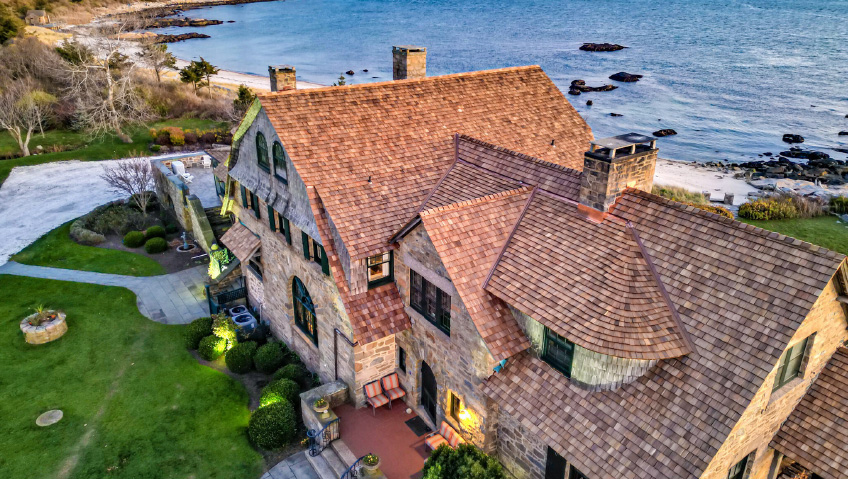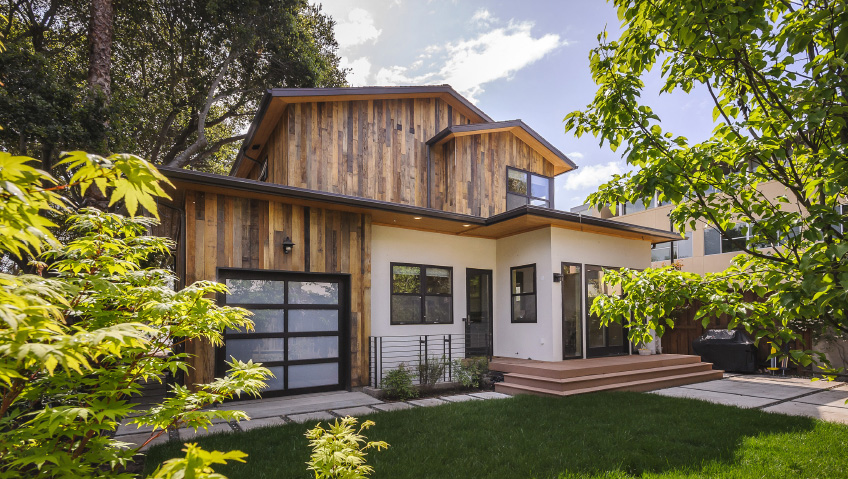DWB Consultants is an integrated engineering firm with expertise in civil, mechanical, industrial, electrical, recreational tourism, and structural work. The company also takes on special projects and offers energy and sustainability services.
Headquartered in Piedmont, Quebec, but with a decentralized office network, DWB strongly emphasizes employee and client satisfaction and innovation. DWB’s pro-environment focus and one-stop shop service model have contributed to its rapid growth.
“If an architect wants to build a new building, they can hire us and we don’t have to talk to any third parties because we can do everything internally… Basically, the only thing we don’t do is the architecture, so that’s where [outside] architects are coming into play,” explains Jean-François Landry. Landry heads an energy and sustainability team that consists of himself and three other employees. His title is “engineer”—same as the company founder, and many others at DWB.
“There’s not much of a vertical hierarchy [at DWB]… everybody is either an engineer or a technician—it doesn’t matter. We don’t give ourselves formal titles like other companies, to show our status,” says Landry.
DWB serves the industrial, residential, commercial, recreational tourism, academic, and municipal sectors, among other markets. Specific engineering services range from feasibility studies and surveys to preliminary and final plans, site supervision, project management, cost analysis, estimates, technical inspections, and Occupational Health and Safety (OHS), to name a few. In addition to traditional engineering services, DWB has also become a leader in energy modeling, which Landry describes as “trying to predict the energy consumption of a building that doesn’t [yet] exist.”
For energy modeling projects, DWB scrutinizes data and design plans to construct a computer model depicting a proposed building’s estimated energy consumption. Features that might be analyzed include the building envelope, construction materials, the HVAC system, and the number and size of windows.
Energy modeling can be used to gauge costs and help determine if a planned building meets regulatory requirements, crucial as new buildings in the province of Quebec must adhere to stringent construction codes that enhance energy efficiency.
“There’s been a huge increase in energy modeling requirements because of these codes,” says Landry. “It triggered a lot of business… [Initially] DWB could not do this type of simulation—they had to hire a third party. Now, since I joined the team, we are able to do all this work internally, which is a big plus for our company and our clients.”
Canadian government initiatives that offer incentives to develop new, energy-efficient, and affordable rental housing have also increased demand for DWB’s energy modeling services, and several high-profile clients have engaged the firm for energy modeling duties. In conjunction with a partner firm, DWB is currently undertaking a “campus-wide greenhouse gas emission reduction study,” for Toronto Metropolitan University (formerly Ryerson University), says Landry.
University buildings are being examined for “greenhouse gas emission reduction potential,” he continues. Studies derived from DWB’s investigation could help the university reach future emission reduction benchmarks.
Landry’s team is also conducting a large-scale energy retro-commissioning project at the University of Waterloo in Southern Ontario. Engineers are examining buildings at the U of W and compiling a list of improvements that might lower energy consumption. “We’re looking at these projects in a holistic way to not only save energy but improve the overall comfort and operation of the buildings,” explains Landry of DWB’s energy-related work.
The company also aims to help clients achieve LEED and Zero Carbon Building certification (Zero Carbon is an initiative from the Canada Green Building Council to decrease the carbon footprint of buildings). DWB practices what it preaches through initiatives like making its offices energy-efficient and encouraging staff to take public transit and reduce their use of paper.
As further evidence of its commitment to sustainability, the company is incorporating more and more Cross-Laminated Timber into its work and designs. To create CLT, multiple layers of lumber are glued together to form a sturdy wooden panel. Wood structures in general boast a smaller carbon footprint than their non-timber counterparts, possess a powerful aesthetic appeal, and align with biophilia principles, Landry explains. “Architects really like wood. It’s inviting, it’s warm, it’s cozy. It gives that really nice, relaxing effect in buildings,” he states.
The company is currently working on a project involving a CLT building at UQAT (the Université du Québec en Abitibi-Témiscamingue). This assignment also involves the use of geothermal energy for heating and cooling, and abundant natural light.
When DWB was founded in 2002, the company’s focus was very different. Launched by structural engineer David Wayne Bennett (whose initials—DWB—formed the company name), the firm initially specialized in structural work within the mining and industrial sectors. Over the years, DWB expanded both its service offering and client base.
The company founder “started to talk with other people—mechanical and electrical engineers—to join the team, then industrial engineers, and eventually civil engineers. So, [DWB] grew organically to offer all these services,” recalls Landry.
Now, the firm continues to grow its service offerings; Landry’s energy and sustainability team was only launched two years ago. The team at DWB has also expanded, from roughly 90 employees last year at this time to 140 at the time of publication. Some of this increase in staff can be attributed to an acquisition DWB made, “but in most cases, the growth is organic.”
Once hired, DWB works hard to retain its employees by offering extensive training, mentorship, benefits, ample opportunities for personal growth, and “a really nice working environment. We encourage people to spend time with their family, and we organize activities,” Landry says.
Funding is available, for instance, for employees who want to do yoga or attend a gym, and employees can participate in group events (last December, DWB staff took part in the 24H Tremblant, a round-the-clock winter marathon in which participants ski, hike (touring), walk, run, and/or snowboard to raise money for charity). DWB wants new hires who are “motivated, have a good attitude, and want to make a real change,” says Landry.
Being able to function in a unique corporate environment is an added bonus. “DWB is very lean—we don’t have a sales team; we don’t have an official business development team per se. Everybody can participate in sales and developing the business. As soon as we make a new hire, we provide them with tools and encourage those who are ambitious to get involved in business development, talking with clients, putting proposals together. So, their business acumen becomes quite good, quite soon. That’s one of the things that makes us different; everyone can have an opportunity to participate in the business,” says Landry.
The company currently has 12 offices, up from eight last year. DWB has multiple offices in Quebec as well as branches in Toronto and Ottawa, Ontario and Moncton, New Brunswick. Expansion is often based on individual initiative: if an engineer wants to move to a new area for personal or professional reasons, and business prospects look favourable, they are encouraged to set up a new office.
This kind of employee-driven growth model is “pretty rare” in the business world, but works well for DWB, notes Landry.
Going forward, the firm plans to add more new services such as lifecycle analysis and climate resiliency studies. In a lifecycle analysis, the lifetime environmental impact of a building is estimated, while climate resiliency refers to design features that enable buildings to withstand inclement weather such as floods, hurricanes, and more.
Climate resiliency involves figuring out “how to design your buildings so they are more adapted to the future climate; I think this is really important,” Landry says. “Current codes are not looking at the future climate. You need to start thinking about what’s going to happen in 2050 or 2100, because you build buildings to last 60 or 75 years. If you don’t think about it, you might have some surprises.”
Climate-resilient features in a building might include an improved cooling system, a storm shelter for occupants, and even enhanced landscaping. Planting large trees in front of a building, for example, is a good way to “reduce the amount of solar gains that are associated with future increases in temperature.”
For promotional purposes, DWB leans heavily on social media, with profiles on LinkedIn, Facebook, and other sites. “We have a fantastic marketing team that is producing some really beautiful material for these platforms,” Landry shares. The company also attends industry events and takes an active role at university and college career days. And DWB’s eco-friendly ethos is a powerful lure, says Landry.
“The younger generation is very interested in energy and sustainability… I spend a lot of time talking to future engineers about energy efficiency and sustainability,” he states.
Over the next few years, he would like to see his energy and sustainability team expand to perhaps a dozen people. He would also be pleased to see the overall DWB personnel continue expanding, depending on the development opportunities that come its way.
“Our company is relatively young, in terms of [people’s] ages. I think we have lots of potential to continue to grow, but we want to do it in the right way,” says Landry. “We want to constantly provide the best service possible to clients.”






